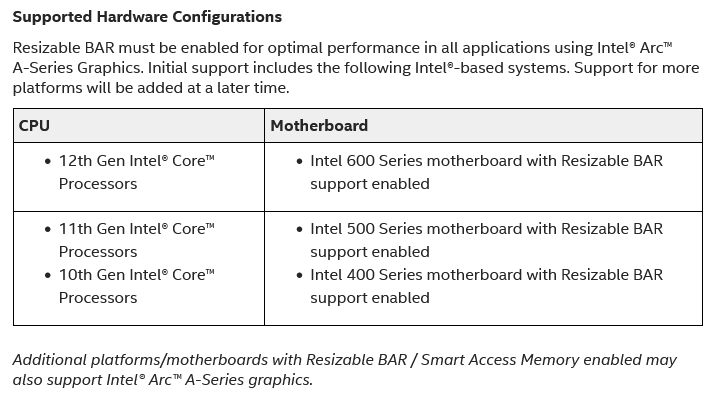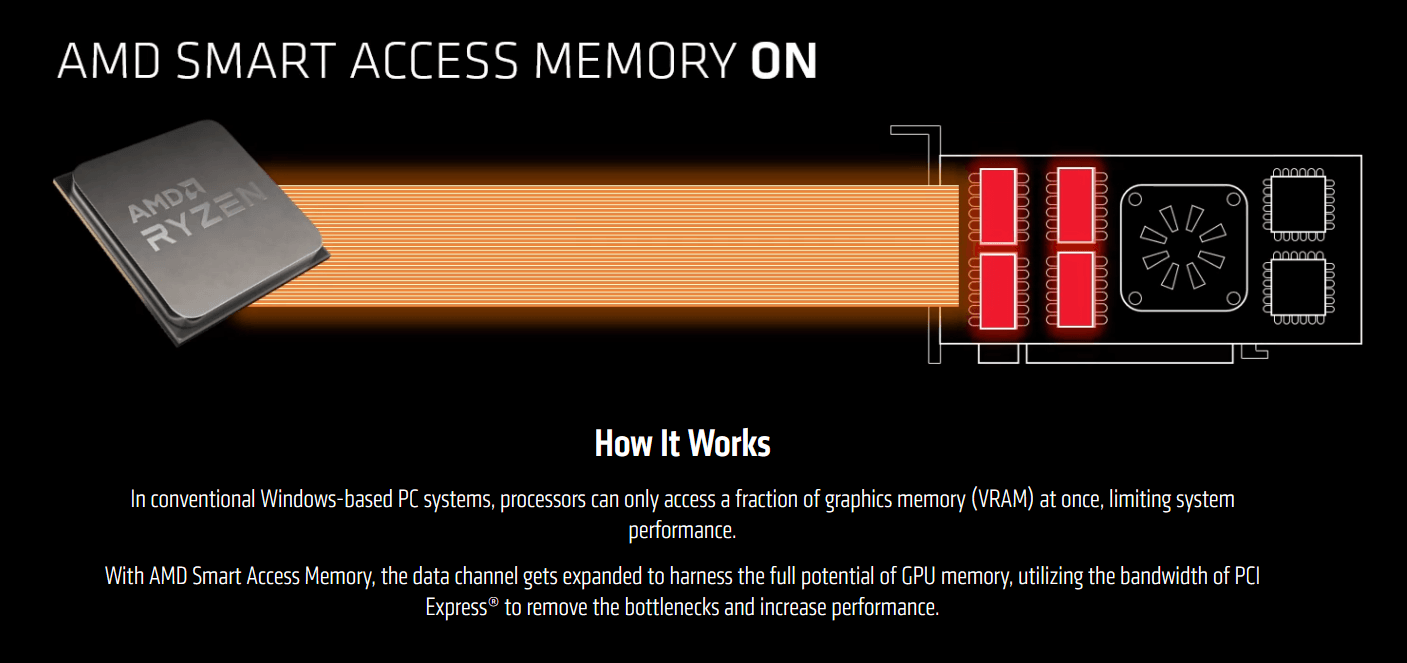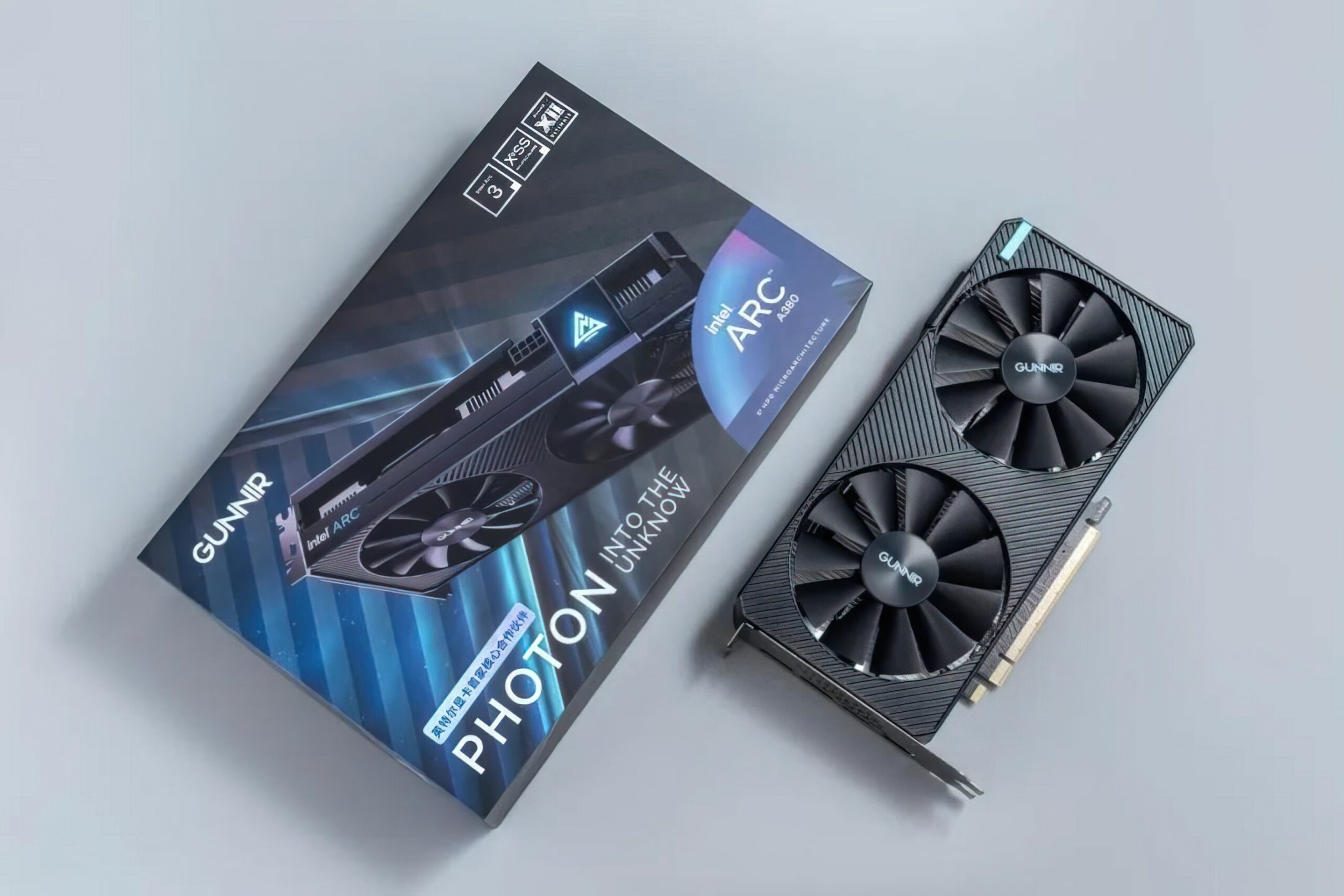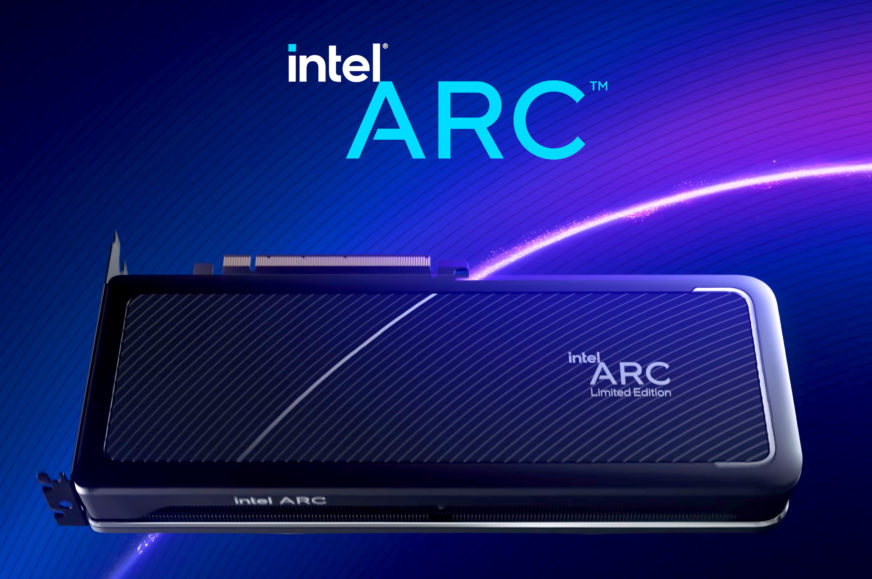Arc GPUs do not support all motherboards and CPUs, they have special requirements
Intel has finally entered the discrete gaming GPU market, even if it’s just the cheap Arc A380 in China. Intel has tried the waters with the Iris Xe card before, but it bizarrely didn’t work with most PCs except for a few select boards. It’s only this new product that finally represents a standard graphics card. However, there are still some oddities: Intel says it requires the board and processor to support PCIe Resizable BAR.
Surprisingly, the Intel Arc A380 graphics documentation states that Intel graphics cards have certain requirements, which is something you don’t usually see in Nvidia and AMD card specifications (except for power supply requirements). Intel states that a PCI Express 3.0 (or newer) ×16 slot is obviously required from the motherboard you’d like to install the Arc A380 card in, although presumably a physical slot that long with only eight active lanes should be sufficient, as the GPU is said to only have a PCIe 4.0 ×8 interface.
But besides that, Intel also states a second requirement: that the board must support the PCIe Resizable BAR feature (or ReBAR). This is a feature that started appearing at the turn of 2020 and 2021 – it’s a designation for technology that extends access to the graphics card memory from the CPU side. AMD was the first to come up with it under the Smart Access Memory label, but then the feature was added via BIOS updates by Nvidia and then Intel as well under the PCIe Resizable BAR label. Activating it usually improves the performance of the graphics card.

According to the documents, Intel supports Arc graphics operation only in computers that support PCIe Resizable BAR. Officially, they must have a 10th, 11th, or 12th generation Intel Core processor, i.e. Comet Lake, Rocket Lake, or Alder Lake. So logically, the board must be something with an LGA 1200 socket and a 400 or 500 generation chipset, or an LGA 1700 with a 600 series (or newer) chipset.

However, there is a note attached that “other platforms or motherboards” may also support Arc A-series (i.e. Alchemist generation) graphics cards if they support PCIe Resizable BAR/Smart Access Memory. Intel actually directly mentions this designation used on the AMD platform, which means you can use the cards with a Ryzen processor (besides the newest generation, AMD also provides support on Zen 2-based Ryzen 3000 processors and X470 and B450 platform boards).
Why is this feature required? It’s probably a performance issue, because according to the document “Resizable BAR must be enabled for optimal performance in all applications using Intel Arc A-series Graphics”. Intel probably wants to emphasize this requirement to ensure that the cards score as well as possible in tests. Perhaps the performance difference with and without ReBAR is relatively large for Intel’s graphics cards, but that’s something that will only be known after testing.

But if it’s just about performance, then it’s quite likely that this won’t be a hard, non-negotiable requirement. So for now, we are inclined to expect that the graphics cards will actually work normally in PCs that can’t enable PCIe ReBAR due to older motherboard and processor, if you ignore possible performance drop. Hopefully Intel won’t artificially block the drivers from working on such configurations or anything like that. What we’re likely talking about here is not the operation being unsupported in the sense that the card doesn’t work at all, but unsupported in the sense that the manufacturer refuses to guarantee functionality and adequate performance on such a configuration. It’s possible that by only supporting PCIe ReBAR being enabled, Intel is making their driver development and testing easier because they only have to check and optimize one codepath instead of two in games.

The document says that “support for more platforms” will be added in the future, so it’s probably possible that this requirement may be eased in the future. But this may refer to other platforms that will meet the PCI ReBAR requirement in future. If it turns out that the cards will unofficially work without PCIe ReBAR (with “unsupported status”), it will be interesting to test whether this leads to any major performance degradation or possibly bugs in games.
By the way, Intel also states that Arc cards are supported under Windows 10 from version 20H2 and later and Windows 11, but does not mention any Linux support (which will probably eventually exist in open source drivers, however).

Sources: Intel, VideoCardz
English translation and edit by Jozef Dudáš, original text by Jan Olšan, editor for Cnews.cz
⠀








